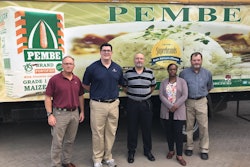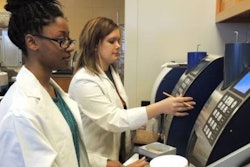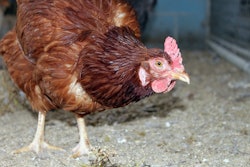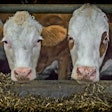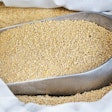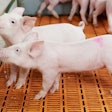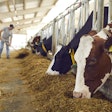Cargill Inc. reported a 3% increase in adjusted quarterly profit on Thursday, citing strong consumer demand for meat and eggs in North America and growth in its animal nutrition businesses, reports Reuters.
On Thursday, two of Cargill's four business units posted higher quarter-on-quarter results -- specifically, its protein and animal nutrition group, and its industrial and financial services division.
Profit at Cargill’s origination and processing business also fell from last year, with the company saying ongoing trade and weather-related disruptions had continued to take a toll.
Despite a flurry of recent commodity grain purchases, U.S. farm product exports continue to face stiff headwinds as tariffs on U.S. goods imported by China, the world’s top soybean buyer and a major importer of various other agricultural goods, remain in place.
Key measures from Cargill's report include:
- Adjusted operating earnings were $908 million, up 3% from $883 million last year.
- Net earnings on a U.S. GAAP basis were $915 million, a 10% decrease from last year’s strong comparative of $1.02 billion.
- First-quarter revenues rose 1% to $29 billion.
“Our year started on a good note as we continued to help our customers navigate an unpredictable business environment,” says Dave MacLennan, Cargill’s chairman and chief executive officer. “Right now, we are focused on modernizing all aspects of our operations so we can effectively and efficiently provide our customers with solutions they value everywhere they do business.”
Performance highlights
Adjusted operating earnings rose in two of Cargill’s four business segments: Animal Nutrition & Protein, and Industrial & Financial Services. They decreased in Origination & Processing and Food Ingredients & Applications. Notable results include:
- Global protein led the way, with strong results in North America as the business brought innovative solutions to customers to help them meet strong consumer demand for beef and eggs. Protein in Europe and Asia climbed due to good poultry performance in China, Thailand and the U.K. Similarly, protein in Latin America improved despite a difficult operating environment.
- Despite pressure from African swine fever, results improved in global compound feeds as the business combined an advantageous product mix with effective cost management. Aqua feeds also captured healthy results amid aquaculture’s high season.
- Starches, sweeteners and texturizers dropped primarily due to lower volumes in Europe and North America. Performance in cocoa and chocolate reflected a softening cocoa market in several regions and higher operating costs in chocolate in North America.
- Results declined for the company’s origination and processing businesses in most geographies, as trade- and weather-related disruptions continued to take a toll.
- The global trading business saw good year-on-year improvement, as it was well-positioned across commodities. The Asia-based metals business also used sound market reads and execution to gain over the prior year.
- Trade finance results were held back by fiscal deterioration in Argentina late in the quarter. In risk management, low prices and low volatility in agricultural markets decreased demand for hedging solutions.
New pathways to growth
During the quarter, Cargill expanded a joint venture and formed new partnerships:
- The company invested an additional $75 million in Puris, the largest manufacturer of pea protein in North America. This will help the firm more than double production by repurposing an existing facility in Minnesota to supply plant-based proteins, starches and fibers to food and beverage customers.
- Cargill formed a commercial partnership with InnovaFeed, a leader in producing protein for feed from insects, to jointly market these feeds as it seeks to support the growth of sustainable aquaculture worldwide. Similarly, an agreement with biotech company White Dog Labs provides Cargill with access to a fermentation-based protein for use in salmon feeds.
Changing what’s possible, sustainably
Across its global businesses, Cargill is teaming up with a unique network of partners to advance the environmental, social and economic sustainability of food and agriculture.
For example, the company announced the BeefUp Sustainability program, which by 2030 will reduce greenhouse gas intensity by 30% across its beef supply chain per pound of product by focusing on grazing management, feed production, innovation and food waste reduction. Achieving the target will be the equivalent of removing 2 million cars from U.S. highways for a year.
With partner Heifer International, Cargill and customer Distribuidora El Tio expanded the Hatching Hope Global Initiative to Mexico. Launched earlier this year, Hatching Hope will provide resources, know-how and market access to smallholder women farmers so they can sustainably increase poultry production and improve the lives of 100 million people by 2030.
To nurture breakthrough innovations, Cargill, Techstars and Ecolab debuted the second cohort of their Farm to Fork Accelerator. Hailing from across the U.S., as well as Canada, Israel and India, startups in the cohort are focused on advancing key aspects of the food system, including food security and safety, ag tech, consumer goods and supply chain management.
The University of Illinois at Urbana-Champaign’s Research Park will house Cargill’s newest Innovation Lab, where a team of data scientists and lab students will work directly with Cargill business leaders, operations teams and customers to find digital solutions to food and agriculture challenges.
“There is no one solution to creating resilient food systems," MacLennan says. "We are using the reach of our global businesses – as well as the expertise of our own teams and our partners – to find the many answers we’ll need to nourish the world in a sustainable way."

